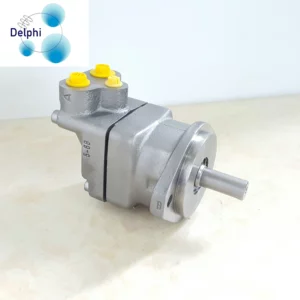To determine which mounting option is best for your hydraulic system, you should consider several factors, including the system’s layout, available space, and operating conditions.
Here are some steps you can follow to determine the best mounting option for your hydraulic pump:
Evaluate your system’s layout: Consider the layout of your hydraulic system and determine the best location for the pump. This will depend on factors such as the system’s size, shape, and available space.
Determine the pump’s weight and size: Determine the weight and size of the pump, and ensure that the chosen mounting option can support the pump’s weight and size.
Consider the operating conditions: Consider the operating conditions of your hydraulic system, such as temperature, pressure, and vibration. Some mounting options may be better suited for high-temperature or high-vibration environments.
Consider the noise and vibration level: Some mounting options can help reduce noise and vibration, so consider this when selecting a mounting option.
Consult the pump manufacturer’s recommendations: The pump manufacturer may have specific recommendations for mounting options based on the pump’s design and intended use.
Consult with an expert: Consult with a hydraulic system expert or a manufacturer’s representative to ensure that you select the appropriate mounting option for your hydraulic pump.
By following these steps, you can determine the best mounting option for your hydraulic pump based on your system’s specific needs and requirements. parker hydraulic pump Properly mounting the pump is important to ensure that it operates efficiently and effectively, so it’s important to take the time to select the appropriate mounting option.
What are some common mounting options for hydraulic pumps?
Hydraulic pumps can be mounted in a variety of ways, depending on the specific application and system requirements.
Here are some common mounting options for hydraulic pumps:
Foot mounting: Foot mounting is a common method of mounting hydraulic pumps. In this method, the pump is mounted to a flat surface using bolts through the pump’s base plate.
Flange mounting: Flange mounting is another common method of mounting hydraulic pumps. In this method, the pump is bolted to a flange on the hydraulic system’s reservoir or tank.
Saddle mounting: Saddle mounting is a method of mounting hydraulic pumps that involves securing the pump to a bracket or saddle that is attached to the hydraulic system’s frame or base.
Through-drive mounting: Through-drive mounting is a method of mounting hydraulic pumps that involves attaching the pump to the input shaft of a hydraulic motor.
Close-coupled mounting: Close-coupled mounting is a method of mounting hydraulic pumps that involves connecting the pump directly to the electric motor’s shaft, eliminating the need for a separate coupling.
Vertical mounting: Vertical mounting is a method of mounting hydraulic pumps in a vertical position, which can be useful for applications where space is limited.
Remote mounting: Remote mounting is a method of mounting hydraulic pumps away from the hydraulic system’s reservoir or tank, which can be useful for applications where space is limited or where noise and vibration need to be minimized.
These are just some common mounting options for hydraulic pumps. The appropriate mounting option will depend on the specific application and system requirements, and it’s important to consult with an expert or a manufacturer’s representative to ensure that the pump is mounted properly.

